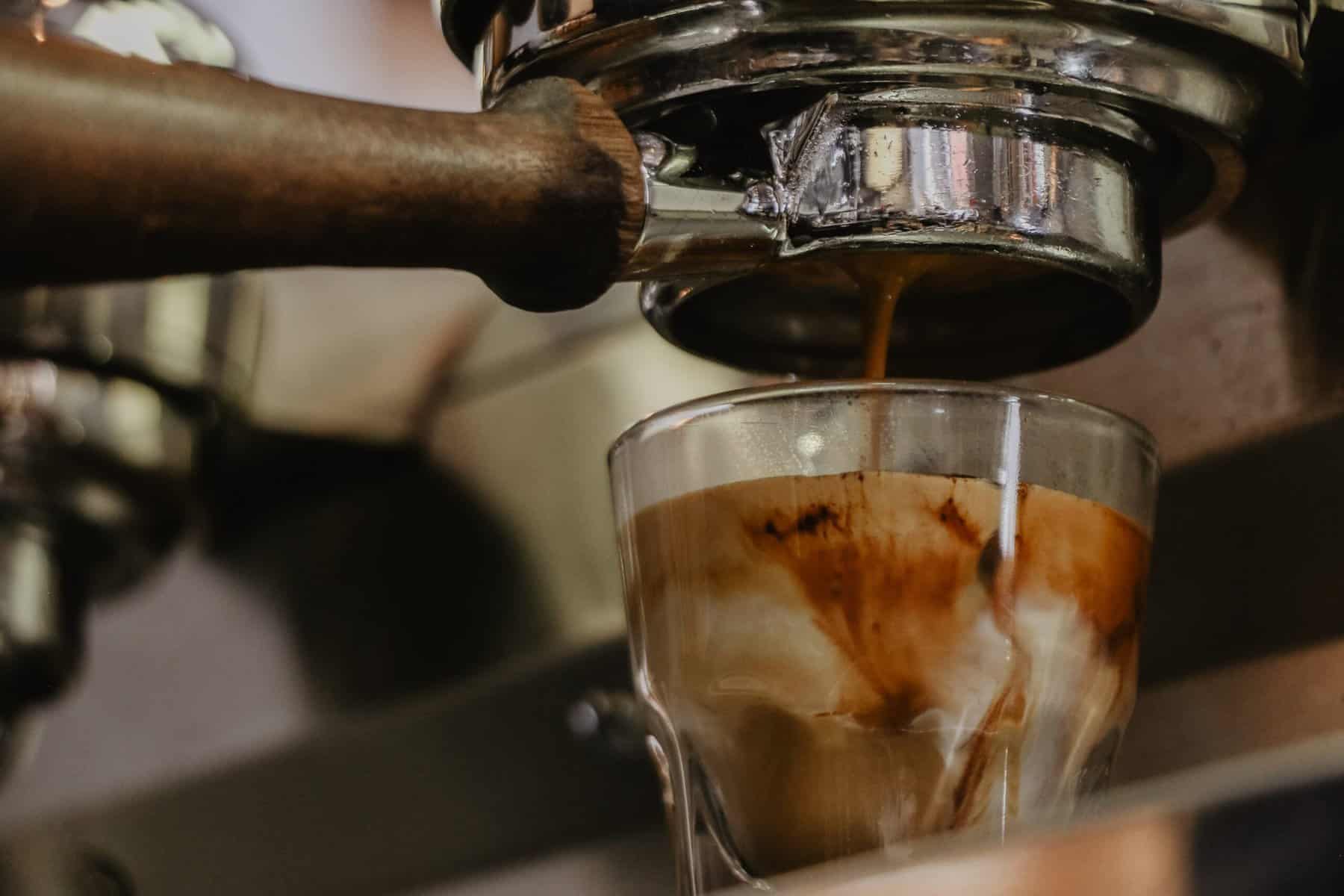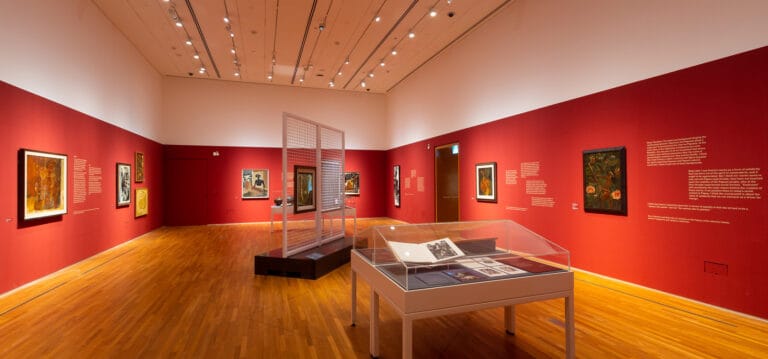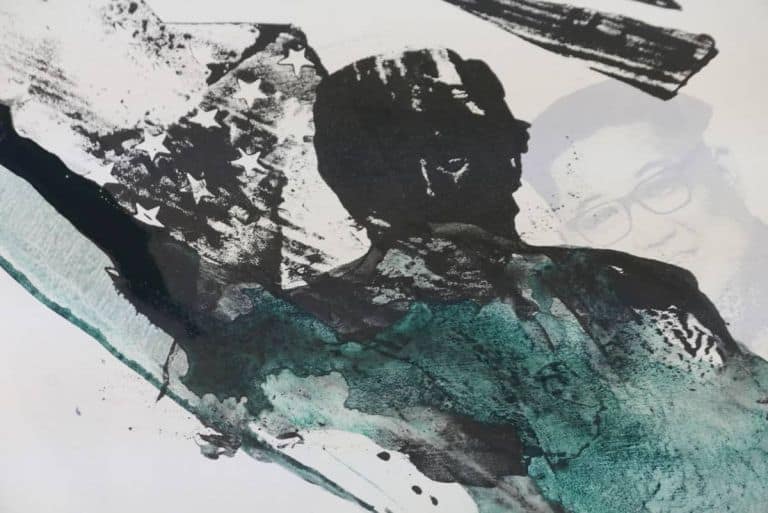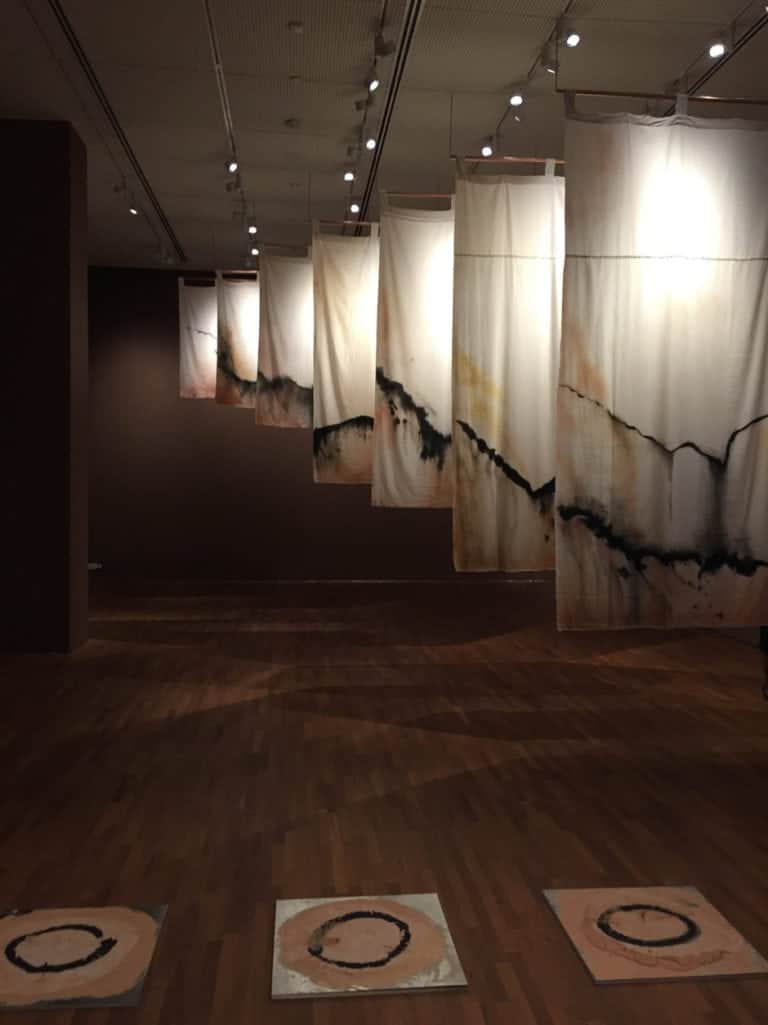It is 7:30 pm on a Thursday night in Ann Siang Hill and I am beat.
It’s been a punishing start to 2023 with work and personal commitments coming at me in full force, and today has been no different. I’m already late after a full day, but determined not to miss this appointment at Maxi Coffee Bar, where artist Calvin Tay is presenting a new body of works.
The last (and first) time I met Tay, was in Tanglin Halt last year, where he exhibited his love letter to the ageing estate in an art show held in an old flat. I’m pleased to report that the joy and exuberance which infused that show, Taking Routes, remains well and alive in Common Grounds, his present exhibition at Maxi.
Tay’s artist talk this evening is in the coffee bar after hours, and the dimly lit space is open to only twelve visitors at a time. I arrive unsure of the location, and my Grab driver is clearly confused at my request to be dropped off at a nondescript, closed establishment:
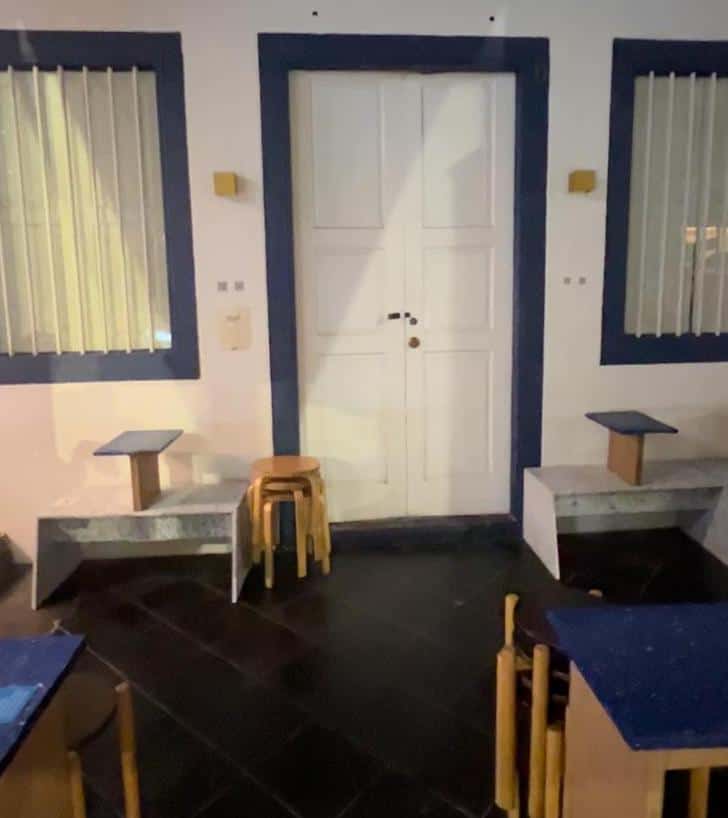
Once inside though, it feels extraordinary and intimate and like we’ve been let in on a special secret. As the doors close behind us, the drunken, rowdy sounds of post-work Ann Siang Hill fade into the distance. The intimacy of the artist talk turns out to be especially atmospheric once Tay starts to explain what the exhibition is about and how the works were made:
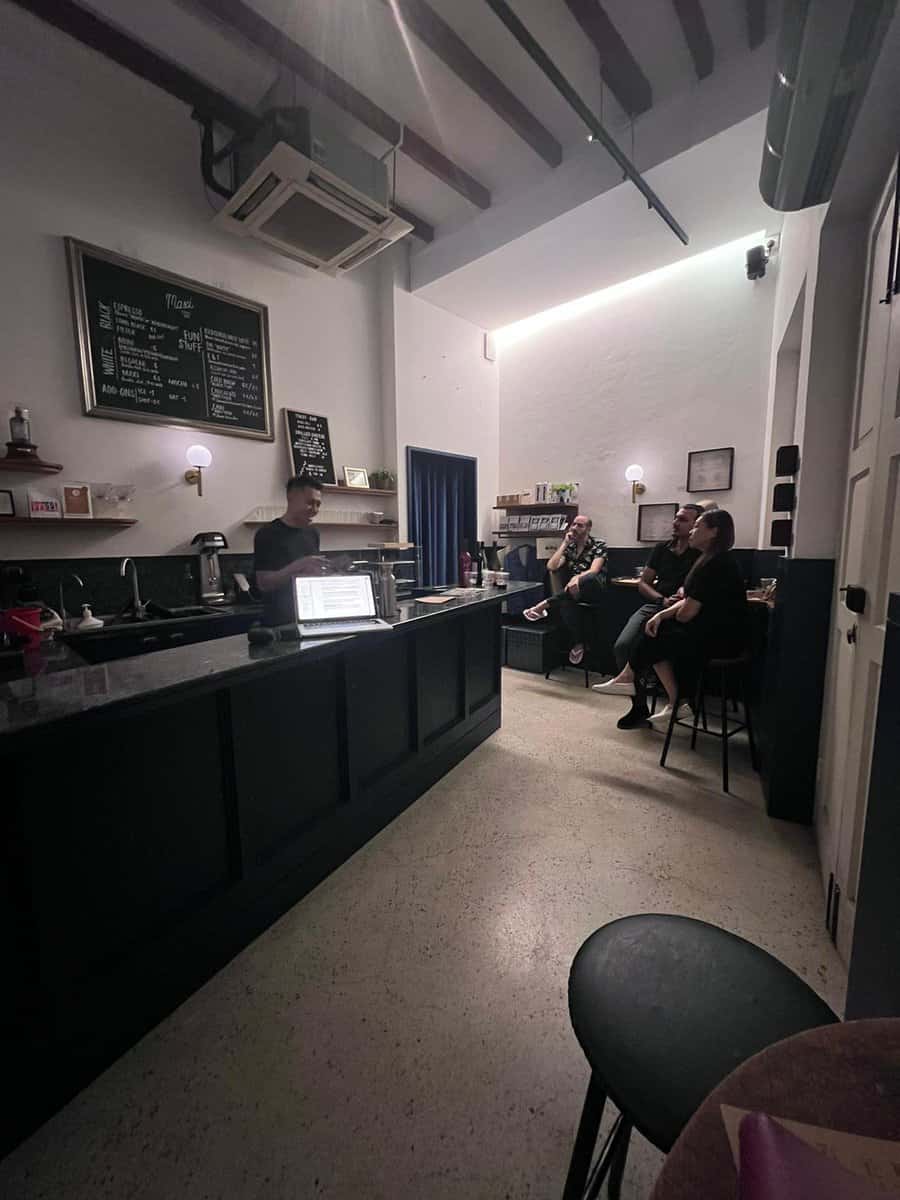
Now, before you dismiss all this as some kind of hipster rubbish (I mean aren’t secret bars and speakeasies so five years ago?), take a minute to read on.
As Tay explains, he “wanted to capture the preciousness of the coffee ritual and people’s expressions of those rituals.”
And so how did he do this?
Over a period of three months, he asked the patrons and baristas of Maxi to fill out forms with a series of questions about their respective relationships with the act of drinking coffee. At the end of the questionnaire, they were asked to draw representations of the relationship in one single unbroken line, between four demarcated corners:
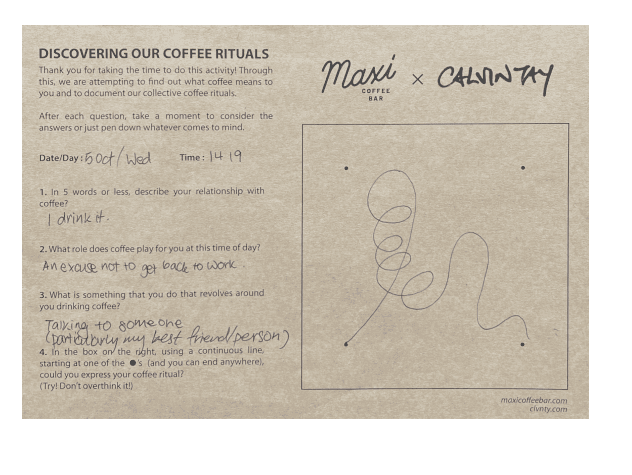
Returning to his use of thermoplastics in his practice, Tay applied a mixture of Hot Melt Adhesive (HMA) and coffee grounds roasted at Maxi to mould the patrons’ and baristas’ depictions into small 3D artefacts. Like the works in Taking Routes, Tay layered the lines repeatedly over themselves, so that the act of artistic production itself became a representation of the repetitiveness of coffee rituals in the participants’ daily routines. The finished works were then grouped together and labelled with extracts from the forms filled out by the respective patrons. Tay then overlaid each grouping with his own interpretation and sense of what the mini sculptures might represent.
He also invites viewers to add their own understanding of the works with a blank line forming part of the work’s title. See below for a diagrammatic explanation of how the artworks are titled:
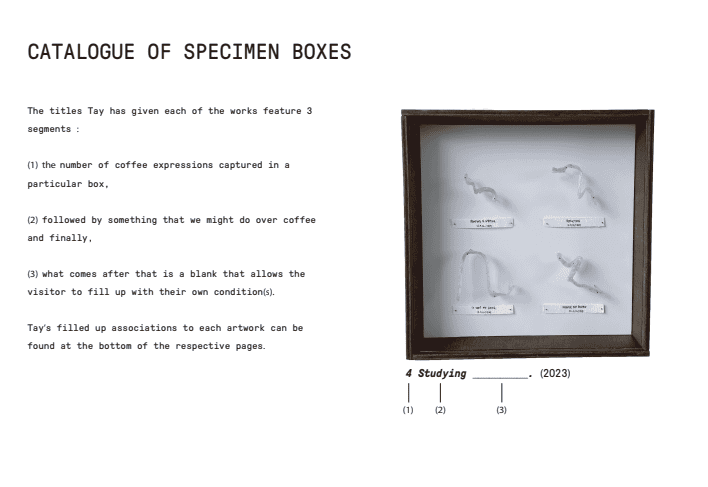
With the work above, 4 Studying_______, in particular, Tay shares with us his impressions of how these shapes reminded him of studying in the Singapore education system where kids pore endlessly over Ten-Year Series assessment books, “cramming everything in and then regurgitating it out.”
He laughs,
“You may think you have gotten it right but it’s wrong, and you go up and down, up and down…and then you have to start all over again.”
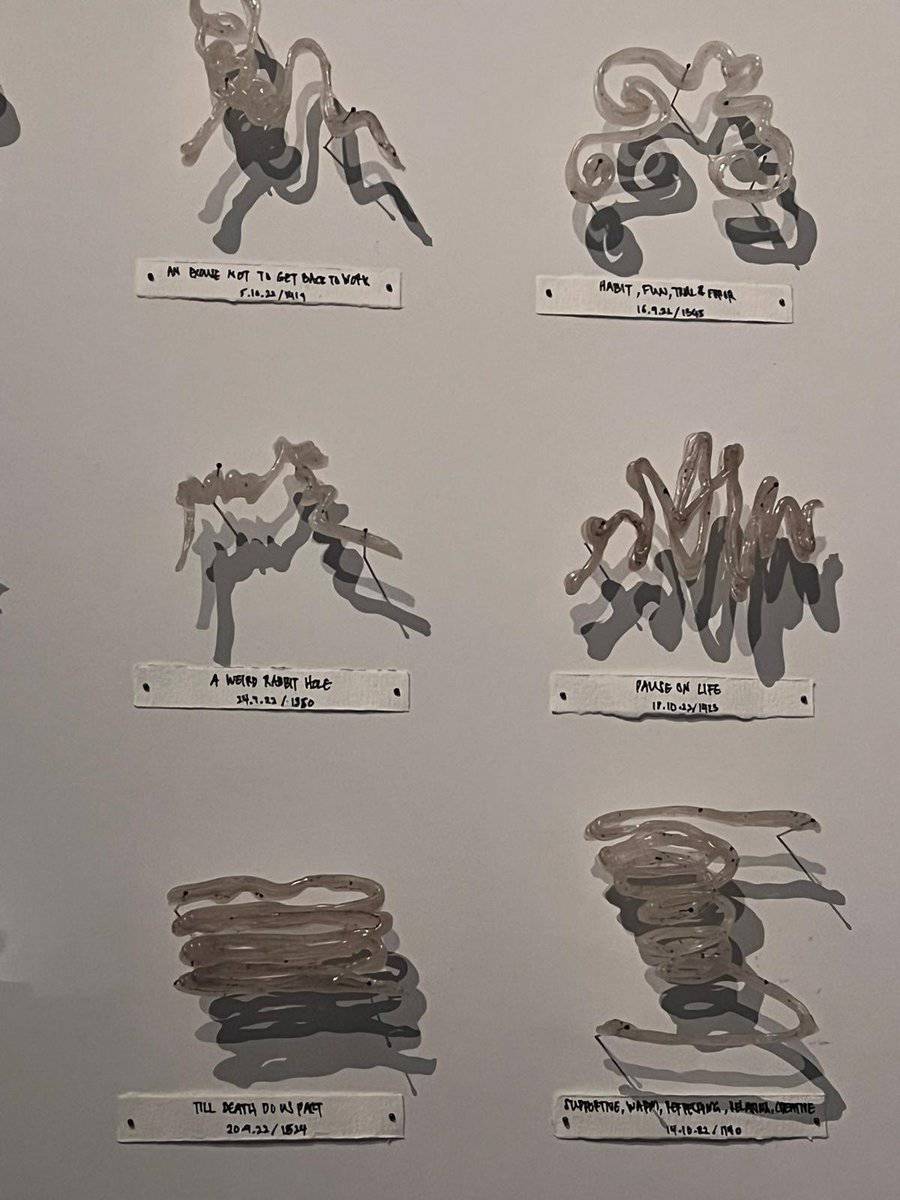
The result is a series of magical squiggles and solidified goo which looks almost gelatinous in form. The dark speckles of coffee grounds give the “coffee expressions” a bizarre organic quality and make them look in equal parts, alive and edible. They are carefully pinned to plywood frames (themselves stained with coffee grounds), as if they are part of a Victorian cabinet of curiosities. Tay explains that he wanted to “go back to nature” and consider the preservation and taxidermy of insects. This formed the inspiration for the ‘capturing’ of people’s expressions and moments with their coffee.
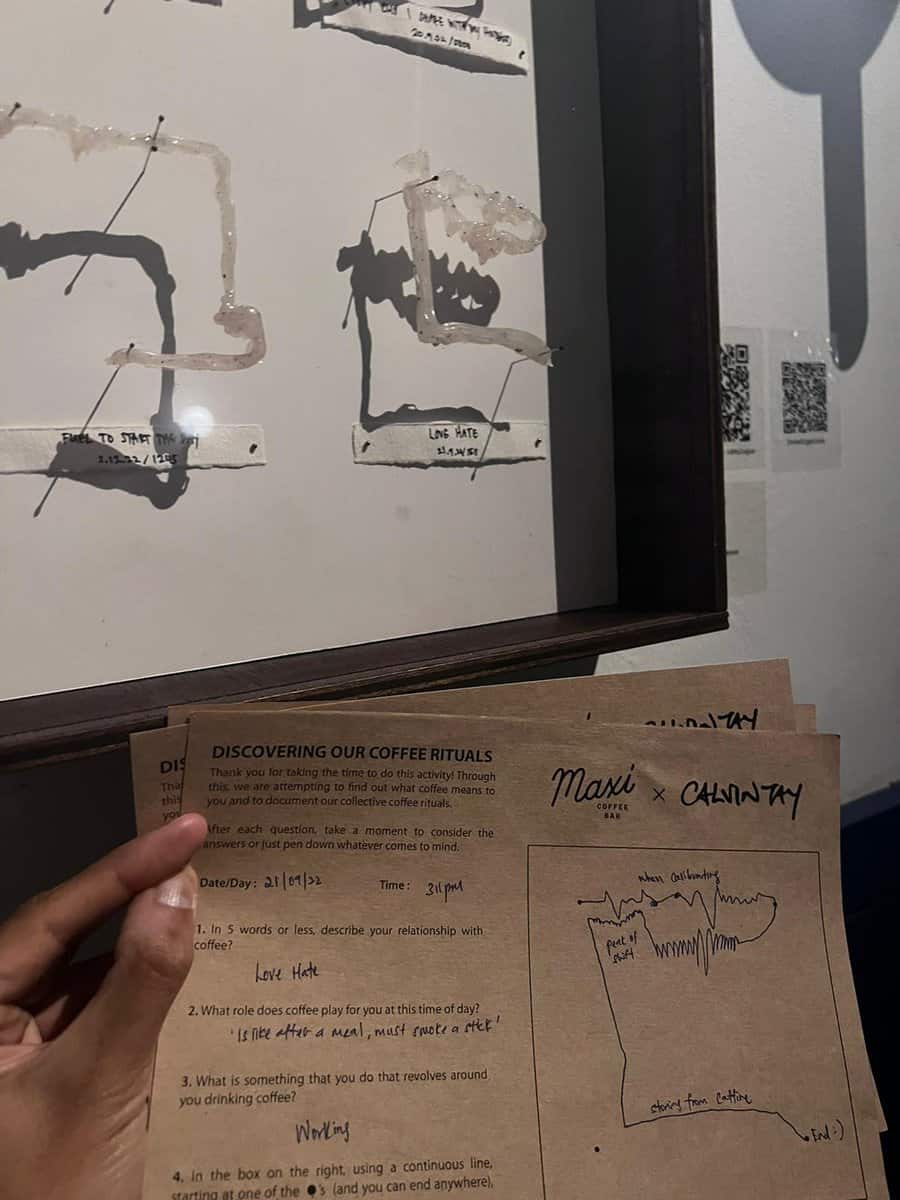
Common Grounds is a tiny show, hardly an exhibition at all, but one that really hits you in the gut. Looking at the mini sculptures in their frames—which cast especially beautiful shadows when the lights were turned down—I am reminded of the minutiae of our everyday routines and those of our friends and families.
What is life if not just a series of repeated rituals involving the things and people we hold dear?
What is life if not something that is inherently transient and fleeting, regardless of the repetitive processes that we engage in to reassure ourselves that we’re still in control?
Staring at those boxes and frozen abstract shapes, I felt an unexpected connection to all the strangers who had shared their favourite memories, and a weird kind of gratitude to be able to experience and witness what Tay describes as a “translation of an intangible experience into a visual representation,” featuring ordinary coffee drinkers who have become “unsuspecting artists.” Tay’s own imaginative re-interpretation of the shapes reminds me of the multiplicity of views and perspectives that can inform our everyday relationships with things and people.
As Tay explains,
“Despite being created by separate individuals, once placed beside each other, these coffee expressions exhibit similar structures and accents that tie them together—they reveal a common ground that we share, a common language that we drink.”
Tay had encouraged patrons to draw “without overthinking” and laughs as he recalls how his own mother had difficulty with the assignment.
“She said, “I am not an artist I can’t draw”…so she drew a piece of bread because that’s what she likes with her coffee,” he shares.
From literal depictions to metaphorical flights of fantasy, these “caffeinated hieroglyphs” were simply delightful. If I must complain, I did wonder what it might be like to look at the works without the artist on hand to explain things. The QR codes on the walls were a little too much for this old Luddite, although I did appreciate the detailed information that the codes linked to. Kudos as well, to Maxi for taking the bold step of engaging its staff and patrons in such a wholesome and meaningful art experience.
At the end of my communion with the “visual manifestations” of this “secret coffee language,” I feel hopeful and calm, and as if the stresses of the busy day have simply melted away. To me, Common Grounds is an example of the best kind of art-making there is, a presentation that digs deep into the lived everyday experiences of regular people while serving up an insightful look at the human condition.
______________________________
Common Grounds is presently showing at Maxi Coffee Bar at 6 Ann Siang Hill till 28 May 2023. Take a look at Calvin Tay’s IG page for details and updates.
Feature image photo by René Porter on Unsplash
